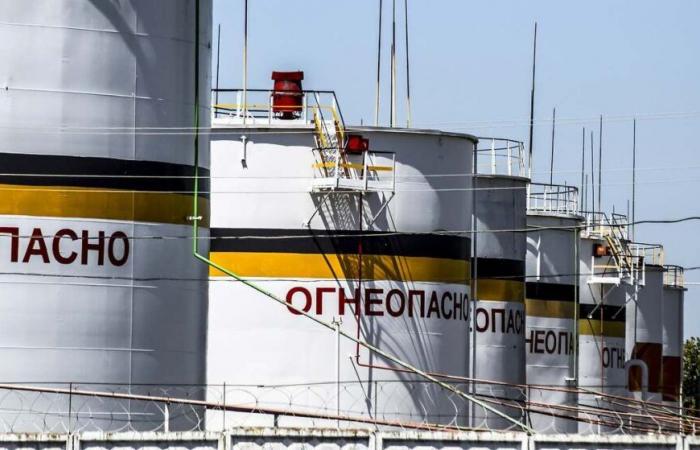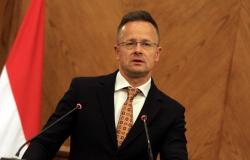
The OPEC has stepped on the accelerator and the demand is freezed with the tariffs. This conjunction of factors has a very clear result for market analysts and experts: the price of barrel, which already erases more than $ 15 so far this year and quotes in the 61st environment, It looks out to a low prices era. However, not only is it that the main houses of Wall Street say it, an unexpected indicator has activated pointing in the same address: Putin and the Kremlin.
Russia has changed the key mechanism of its budgets, which depends sensitively on oil, assuming that it is a lower prices era. Specifically this is the “Petroleum Budget Rule”. This is a fundamental mechanism for the Russian economy, highly dependent on energy. In short, to protect the national accounting of price volatility, the Kremlin sets a reference price, a figure that they consider sustainable. On this occasion it has been decided to reduce this limit anticipating an era of lower prices.
Taking into account that Russia is part of the OPEC+ and has been one of the leaders in volunteer cuts, this movement gives arguments so that it is not a simple threat. The cartel has tripled the production that puts on the market for the third consecutive meeting. The group had been removing barrels from the market for a year and a half to keep prices high. The idea was a soft decalsed that had already been delayed a lot, returning to Include about 135,000 barrels per day by meeting. However, Arabia has led a radical turn introducing about 411,000 barrels in the last two meetings. This has caused a great crack in prices and Russia is already preparing for the impact altering its great rule.
This is how the gold rule works
Moscow puts this line in the sand with a clear objective, all extra income that comes from a higher price to that is vetoed for the budget. Instead it is stored in the National Welfare Fund. If on the contrary the crude falls below that limit, The government can use that special vehicle that acts as a sovereign background to cover the deficit. The objective of this measure is to grant stability and that the budgets do not depend on the oscillations of the crude oil.
This National Welfare Fund is essential because it is used to maintain the pension system outside the budget payments when oil fails. This winter vehicle in National projects, currencies, gold and bonds. Therefore, it is not just a piggy bank that the government uses to alleviate complicated oil years, the Kremlin has special interest in not emptying.
While being endowed with large raw and gas deposits this exposes you to a ‘curse’, high exposure, volatility and chaos .. these two products alone They represent more than 40% of all their exports. According to the Rossat Statistics Agency, the participation of crude oil and gas in Russian GDP exceeds 20%. This relationship, in addition, has been growing in 2024 where oil and gas revenues increased by 26% to 108,220 million dollars, according to the same energy minister Alexander Novak.
This high dependence has caused true crises and shocks that the ‘oil budget rule’ intends to solve. The most recent example is the 2014 ruble crisis, where Precisely Arabia flooded the market to destroy American fracking. This caused a brent collapse of 110 dollars to 30, something that, added to the sanctions for the annexation of Crimea, caused a loss of 50% of the ruble against the dollar. The Central Bank of Russia launched a 17% rise in interest rates and, ultimatelyinflation shot 13% and a recession in 2015 of 2.5% of GDP was unleashed with a collapse of internal consumption of 10%.
From Oxford Economics they point out that the rule has been especially useful. “The implementation of the budget rule has allowed Russia to accumulate reservations During periods of high oil pricesproviding a financial mattress for low price times. “The firm continues to explain that this same 2024” This strategy helped mitigate the effects of volatility on energy markets, allowing the government to maintain public spending without resorting to excessive indebtedness. “
Putin’s movement
But what concrete movement has Russia made? The Euroasy country has reduced raw limit by 10 dollars From $ 60 a barrel to dollars. Russia is being damaged double and needs to lighten the norm to avoid a fall in its national accounts. The last time to touch this indicator was in 2022, when the Ukraine war shot prices until it reached 120 dollars. At that time the reference price went from $ 40 to 60.
The Ministry of Finance tripled its objective of budget deficit by 2025 last week after income expectations and the price of oil were reduced. The liquid funds available to spend They were reduced to 3.3 billion rubles In April, compared to 8.4 billion rubles of early 2022, before the start of the invasion.
That 60 -dollar threshold the barrel price means that a hard blow to the economy and a challenge for that system because if it continues to throw from the sovereign fund to pay deficit (since the criteria are met with The barrel of the urales is quoted at $ 48.9) This will be at risk. The Kremlin seeks to minimize that possibility while public accounts by working with a pricing goal closer to reality can operate more clearly.
After the decision of the members of the OPEC+, Russia may increase its production of crude to 9.16 million of daily barrels in June, according to Bloomberg. In March, the country extracted 8,965 million barrels per day. Russia has voted favorably to the new barrels of OPEC with the idea of compensating part of the lost in prices with an increase in its sales.
The coup d’etat
At the moment the GDP forecasts of the Ministry of Economy of Economics of Russia point to a 2.5% growth For this year, a sound slowdown after 4.3% of 2024. The fall can be even more sound if the IMF forecasts are taken, which point to a growth already only 1.8%. Oil has a good part of the fault of both this and the deficit in which Russia is entering. According to the Ministry of Finance, the Deficit estimate has gone from 0.5% to 1.7% only due to the price drop and the coup foresee in energy income. According to the latest study of the Bank of Finland carried out on Monday, if the barrel is in the 55 dollars this 2025 this will mean a more point impact on Russian growth.
Russia’s fronts have multiplied with war, with 10.3% inflation and rebounded in 2023. Public expenditure has clearly risen 6% and bottlenecks have formed before the low offer of workers and supplies (for the conflict) that have especially affected food. This even with interest rates in 21%. The Bank of Finland explains that the crude is also being the key to explaining the rebound in prices (with the IPC at maximum since 2023) since “a price decrease brakes the ruble and more expensive imports, something that especially affects technology and machinery.”
Apart from the impact that this era of low oil prices can generate in Russia there is something that is clear: Russia already assumes it beyond a bravate in Arabia and acts accordingly. The main reason why OPEC is accelerating the step is because the kingdom is seeing with great disapproval as various countries, although in particular KazakhstanThey are accelerating the production by jumping the limits. Given this problem, he has chosen to accelerate the step and not continue paying the party of Astaná or Baghdad. Despite who can think that this pulse could be resolved soon and thus achieve a calm cartel in its descalae, it is not what Russia thinks, which changes one of its fundamental rules.





